2025
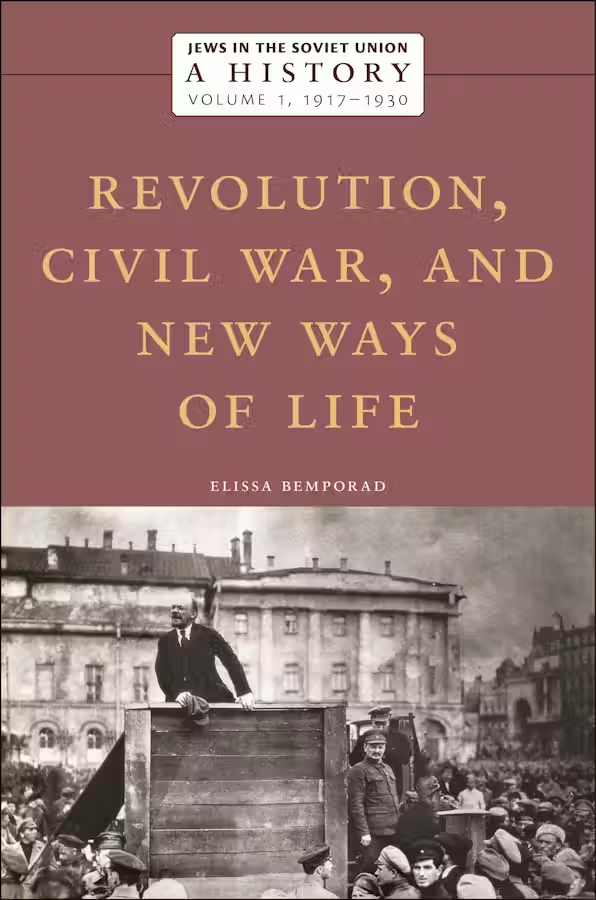
Revolution, Civil War and New Ways of Life, 1917-1930
Elissa Bemporad NYU Press, 2025.
Chronicles the encounter of one of the largest Jewish communities in the world with war, revolution, and Soviet power from 1917 through 1930
At the beginning of the twentieth century, more Jews lived in the Russian Empire than anywhere else in the world. After the Holocaust, the USSR remained one of the world’s three key centers of Jewish population, along with the United States and Israel. Yet while a great deal is known about the history and experiences of the Jewish people in the US and in Israel in the twentieth century, much less is known about the experiences of Soviet Jews. Jews in the Soviet Union, a new multi-volume history, is an unprecedented undertaking. This groundbreaking work draws on rare access to documents from the Soviet archives, allowing for the presentation of a sweeping history of Jewish life in the Soviet Union from 1917 through the early 1990s.
Volume 1 tells the story of the ways in which Jews endured, adjusted to, and participated in the Soviet system both as individuals and as part of a Jewish collectivity during the first decade of its existence. The volume explores Jewish cultural, political, and social life in the different regions of the Soviet Union, integrating gender and women’s issues, narratives of historical elites and ordinary folk. It focuses on everyday life and discusses the fate of Jews in the Soviet Union both as Soviet citizens and as Jews. Chronicling the ways in which different Jews became Soviet in the 1920s, the volume reveals how the lines of contact between Jews in the Soviet Union and the outside world fluctuated between open antagonism and impassioned support.
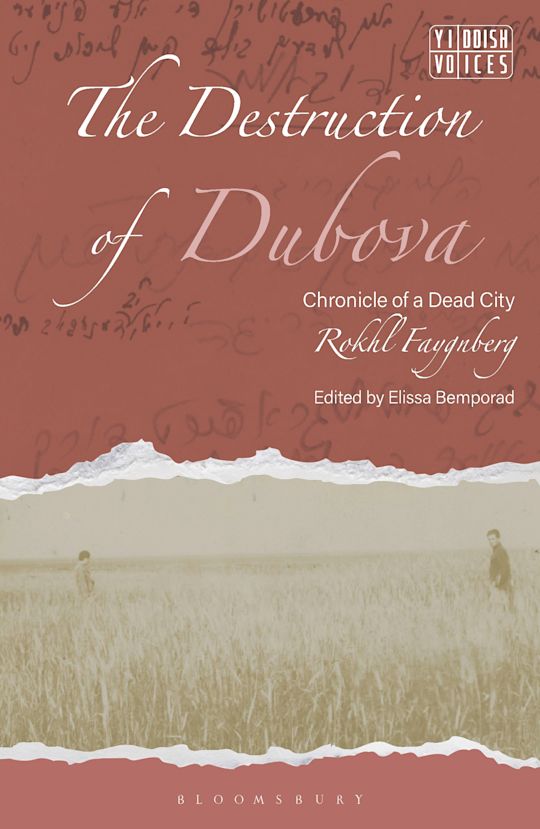
The Destruction of Dubova
Rokhl Faygnberg (Author) , Yankl Salant (Associate Editor) , Elissa Bemporad (Anthology Editor) , Cynthia Madansky (Translator)
Written by Yiddish writer Rokhl Faygnberg, The Destruction of the Dubova Shtetl is a powerful account of the elimination of the Jewish community of one shtetl during the pogroms of the Russian Civil War, 1918-1921. Based on her personal interviews with survivors, Faygnberg presents a detailed description of the evisceration of the vibrant Jewish community of Dubova, which, after enduring torture, killings, and destruction-was ultimately wiped off the map of Ukraine. In this unique memorial book, translated into English here for the first time, Faygnberg chronicles the demise of a typical shtetl, which like so many others at the time, was caught up in the genocidal violence of the civil war, a period that is largely forgotten, overshadowed by the Holocaust that took place in these same lands some twenty years later. The biographical details of the Jewish community members of Dubova provide a moving portrait of the familiar and neighborly relations, as well as of the pettiness of everyday life on the eve of destruction, made of conflict, class tension, and intermarriage. Faygnberg’s narrative also captures the extreme violence of the pogroms of the Russian Civil War, by dwelling on the perpetrators’ actions and motivations, and on the intimacy of genocide made of neighbors killing neighbors, and by bringing to life the Jewish community’s desperate attempts to resist and survive the brutality.
By building on the most recent historiography on the Russian Civil War and anti-Jewish violence, Elissa Bemporad expertly contextualizes the destruction of the shtetl of Dubova within the political and military events of 1918-1921 in the volume’s introduction. Bemporad explores both the perpetrators’ motivations and the victims’ responses to the pogroms, as well as examining the original writing produced by Rokhl Faygnberg, whose genre straddles between a historical chronicle based on witness accounts, and a work of literature. Lastly, the introduction discusses the fascinating history of Faygnberg’s text, uncovering the different political and cultural purposes it served at different times and what it can tell us about anti-Jewish violence today.
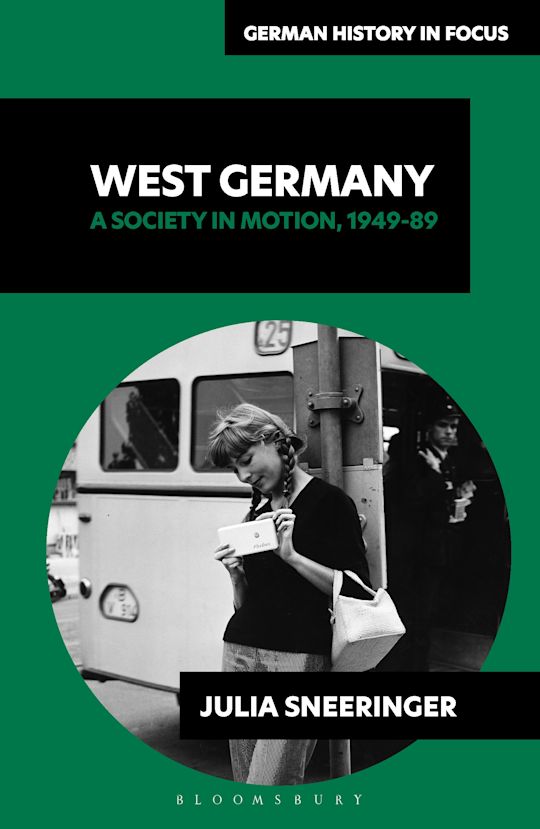
West Germany: A Society in Motion, 1949-89
Julia Sneeringer, Bloomsbury, 2025
Julia Sneeringer’s book provides a concise overview of developments in the Federal Republic of Germany from the end of the Second World War and Germany’s division, to the unification of East and West Germany in 1990. Within the framework of key political and economic moments, it illuminates how West Germans experienced social, economic, and cultural change across four decades.
Chronologically structured and supplemented with timelines, each chapter in the book presents the major themes, events and developments occurring during the period. A focused bibliography is also included to offer guidance on further reading. Among the notable topics covered are:
· The redefining of German identity after Nazism
· Democratization
· The explosion of consumer culture
· The protest movements of 1968
· Changing gender and sexual roles
· Immigration and multiculturalism
· Pop culture
· Environmentalism
· Terrorism
· The return of the right in politics
West Germany in Focus is a peerless introduction to West Germany for anyone looking to understand the complexities of German history since 1945.
2023
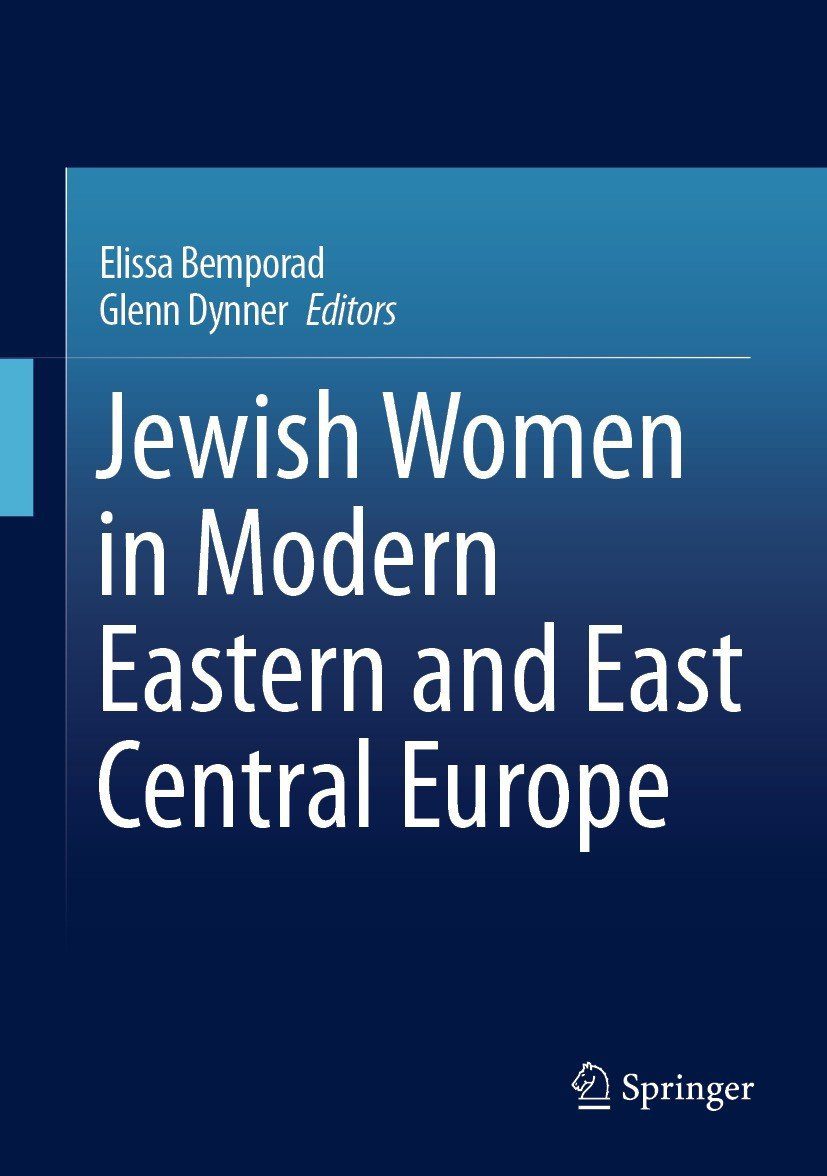
JEWISH WOMEN IN MODERN EASTERN AND EAST CENTRAL EUROPE
Elissa Bemporad and Glenn Dynner, eds. Jewish Women in Modern Eastern and Central Europe. Springer, 2023.
This book provides a rigorous social historical study of Eastern and East Central European Jewry with a specific focus on women. It demonstrates that only through the experiences of women can one fully understand key phenomena such as the momentous changes occurring in Jewish education, conversion waves, postwar relief efforts, anti-Jewish violence, Soviet productivization projects, and, more broadly, the acculturation that animated Jewish modernization. Rather than present a scenario in which secularism simply displaces traditionalism, the chapters in this book suggest a mutually transformative secularist-traditionalist encounter within which Jewish women were both prominent and instrumental.
The Chapter “’To Write? What’s This Torture For?’ Bronia Baum’s Manuscripts as Testimony to the Formation of a Write, Activist, and Journalist” is available open access under a Creative Commons Attribution 4.0 International license via link.springer.com.
https://link.springer.com/book/10.1007/978-3-031-19463-4
2022
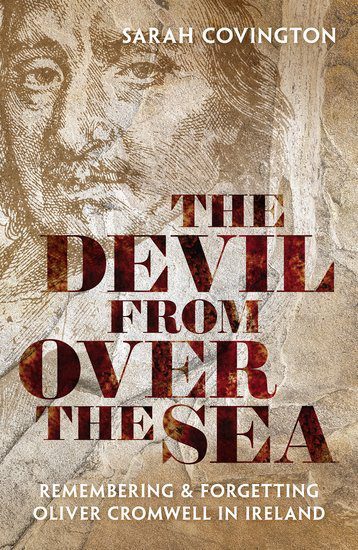
THE DEVIL FROM OVER THE SEA
By Sarah Covington
In Ireland, few figures have generated more hatred than Oliver Cromwell, whose seventeenth-century conquest, massacres, and dispossessions would endure in the social memory for ages to come. The Devil from over the Sea explores the many ways in which Cromwell was remembered and sometimes conveniently ‘forgotten’ in historical, religious, political, and literary texts, according to the interests of different communities across time. Cromwell’s powerful afterlife in Ireland, however, cannot be understood without also investigating his presence in folklore and the landscape, in ruins and curses. Nor can he be separated from the idea of the ‘Cromwellian’: a term which came to elicit an entire chain of contemptuous associations that would begin after his invasion and assume a wholly new force in the nineteenth century.
What emerges from all these memorializing traces is a multitudinous Cromwell who could be represented as brutal, comic, sympathetic, or satanic. He could be discarded also, tellingly, from the accounts of the past, and especially by those which viewed him as an embarrassment or worse. In addition to exploring the many reasons why Cromwell was so vehemently remembered or forgotten in Ireland, Sarah Covington finally uncovers the larger truths conveyed by sometimes fanciful or invented accounts. Contrary to being damaging examples of myth-making, the memorializations contained in martyrologies, folk tales, or newspaper polemics were often productive in cohering communities, or in displaying agency in the form of ‘counter-memories’ that claimed Cromwell for their own and reshaped Irish history in the process.
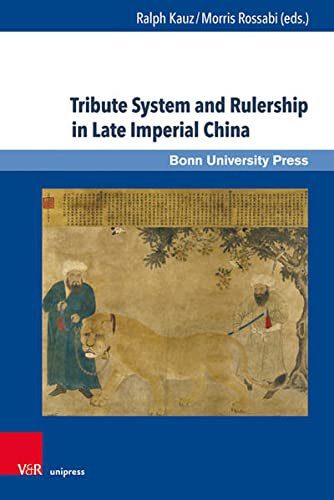
TRIBUTE SYSTEM AND RULERSHIP IN LATE IMPERIAL CHINA
Morris Rossabi and Ralph Kauz (eds.)
Demanding and offering tribute is a most common feature in human societies and nothing special to China. In the course of the development of Neolithic societies social classes have developed where persons who achieved superior positions first could demand ‘presents’ or tribute from neighboring societies they defeated and then, with the assistance of sturdy ‘servants’ from their own people. China was certainly no exception to that principle and one of the first terms for tax was thus gong, tribute. In China’s early, ‘feudatory’ social system, tribute was demanded from lower political entities, and the mutual ‘political’ relations were already highly developed during the Zhou dynasty (1045-256 BCE). This system of ‘inner Chinese’ relations became a sort of matrix when China expanded and achieved contact with countries which were more or less independent, and thus the ‘tribute system’ evolved.
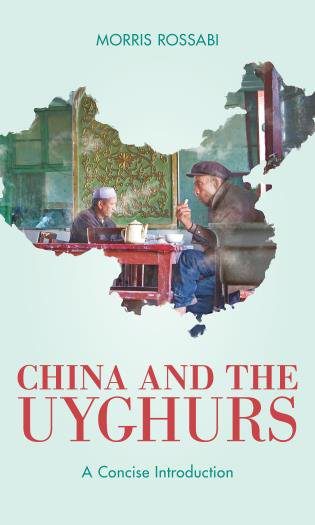
CHINA AND THE UYGHURS: A CONCISE INTRODUCTION
By Morris Rossabi
This balanced history of Xinjiang and its Uyghur inhabitants traces the development of this ethnic group from imperial China to the present and its fraught relationship with the Chinese state. Morris Rossabi focuses especially on CCP policies, both progressive and repressive, toward the Uyghurs since 1949.
2021
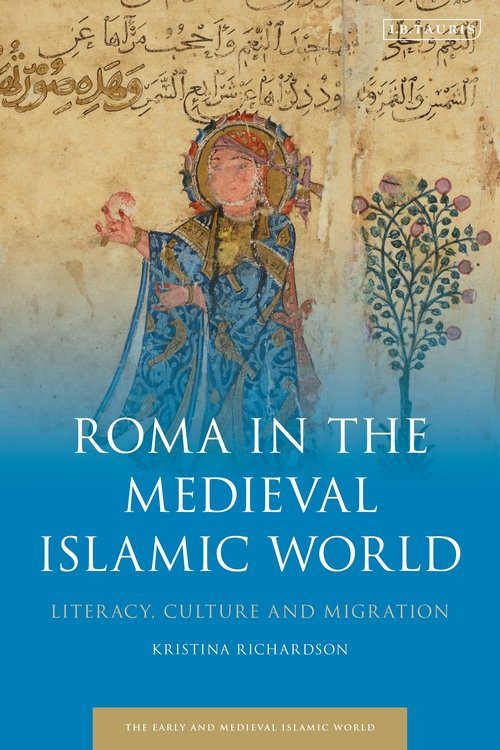
ROMA IN THE MEDIEVAL ISLAMIC WORLD: LITERACY, CULTURE AND MIGRATION
by Kristina Richardson (now at the University of Virginia)
In Middle Eastern cities as early as the mid-8th century, the Sons of Sasan begged, trained animals, sold medicinal plants and potions, and told fortunes. They captivated the imagination of Arab writers and playwrights, who immortalized their strange ways in poems, plays, and the Thousand and One Nights. Using a wide range of sources, Richardson investigates the lived experiences of these Sons of Sasan, who changed their name to Ghuraba’ (Strangers) by the late 1200s. This name became the Arabic word for the Roma and Roma-affiliated groups also known under the pejorative term ‘Gypsies’.
This book uses mostly Ghuraba’-authored works to understand their tribal organization and professional niches as well as providing a glossary of their language Sin. It also examines the urban homes, neighborhoods, and cemeteries that they constructed. Within these isolated communities they developed and nurtured a deep literary culture and astrological tradition, broadening our appreciation of the cultural contributions of medieval minority communities. Remarkably, the Ghuraba’ began blockprinting textual amulets by the 10th century, centuries before printing on paper arrived in central Europe. When Roma tribes migrated from Ottoman territories into Bavaria and Bohemia in the 1410s, they may have carried this printing technology into the Holy Roman Empire.
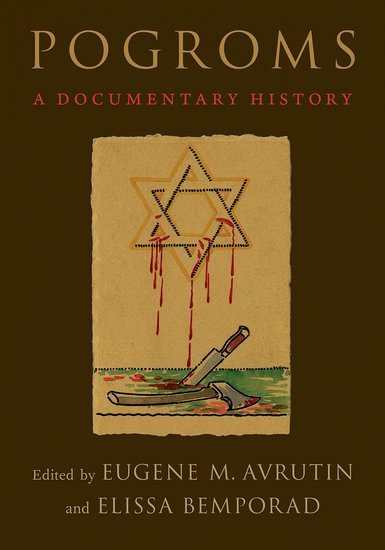
POGROMS: A DOCUMENTARY HISTORY
Edited by Eugene M. Avrutin and Elissa Bemporad
This edited volume surveys the complex history of anti-Jewish violence by bringing together archival and published sources–many appearing for the first time in English translation. The documents assembled here include eyewitness testimony, oral histories, diary excerpts, literary works, trial records, and press coverage. They also include memos and field reports authored by army officials, investigative commissions, humanitarian organizations, and government officials. This landmark volume and its distinguished roster of scholars provides an unprecedented view of the history of pogroms.
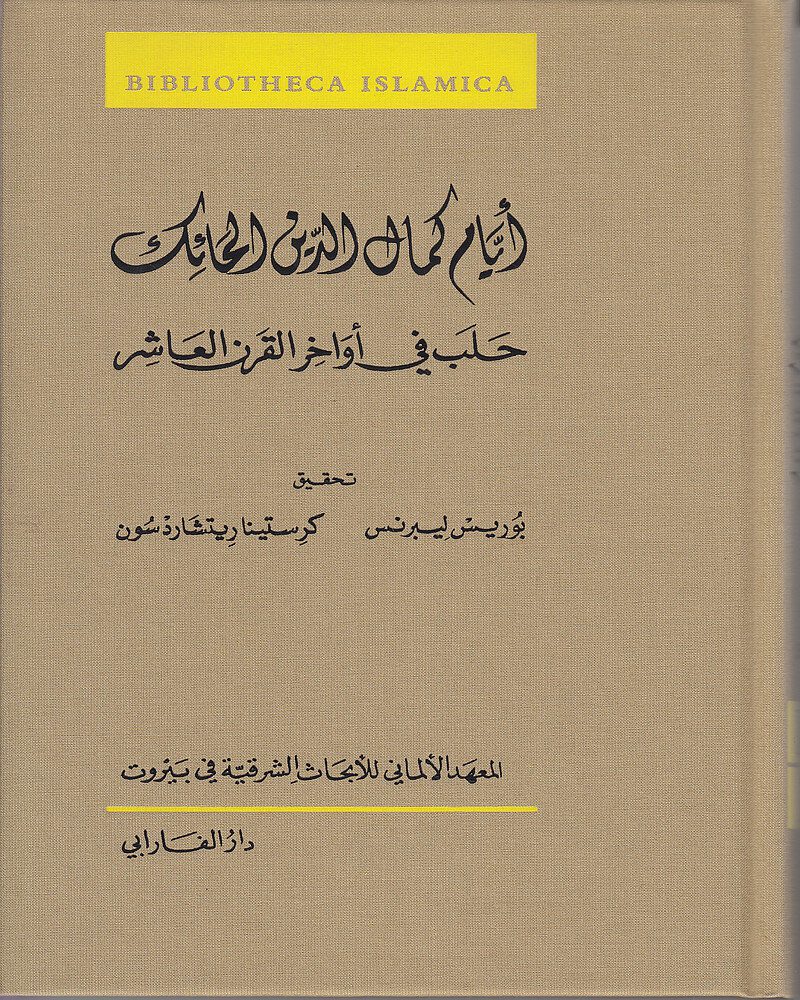
THE NOTEBOOK OF KAMĀL AL-DĪN THE WEAVER
Editors: Boris Liebrenz and Kristina Richardson
At the end of the 10th / 16th century in Aleppo, a weaver, cloth merchant, and poet named Kamāl al-Dīn would regularly take his time to fill blank pages with his varied observations. But it was not a linear narrative he produced, nor was it a diary. Rather, he scribbled down accounts on the political and social life of his city and the region; the climate; economic developments; his craft; poetry, much of it his own; anecdotes; reading excerpts; obituaries of dignitaries and friends; history. In doing so, Kamāl al-Dīn upends assumptions about literary agency, faith, and class in the Ottoman Arab provinces and thus gives us insights rarely seen in other contemporary works.
Only a fragment of what once must have been a sizeable work survives, now preserved in the Forschungsbibliothek Schloss Friedenstein in Gotha under the shelfmark MS orient. A 114. It represents the earliest known Arabic notebook of an artisan or merchant.
2020
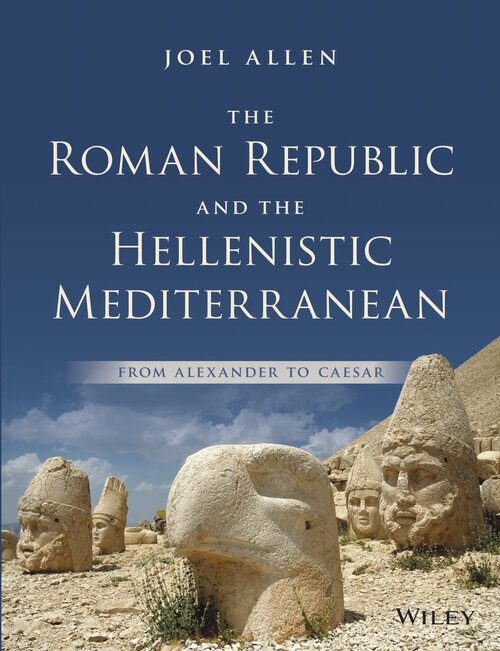
THE ROMAN REPUBLIC AND THE HELLENISTIC MEDITERRANEAN
by Joel Allen
Broad in scope, this book uniquely considers the history of the Roman Republic in tandem with the rich, simultaneous histories of the Hellenistic kingdoms and city-states that flourished after the death of Alexander the Great—the Ptolemies in Egypt, the Seleucids in Syria, Athens, Alexandria, Pergamon. Readers are introduced to a full picture of life in the ancient Mediterranean world amid a multitude of interconnections—not just between Rome and the Greek East, but also among other major players, like Carthage, Persia, Judaea, and the Celts. Taking a mostly chronological approach, chapters incorporate cultural change alongside developments in politics and international relations, featuring texts by comic playwrights, lyric poets, forensic orators, court historians, and generals on campaign. Cornelia and Cleopatra, Pyrrhus and Pompey, Hannibal and Herod, the cast of characters transcends the borders that are largely the product of modern imaginations.
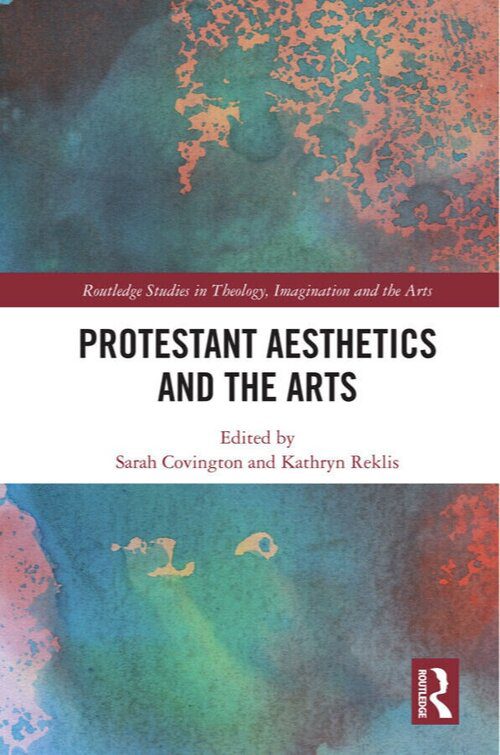
PROTESTANT AESTHETICS AND THE ARTS
Edited by Sarah Covington and Kathryn Reklis
The Reformation was one of the defining cultural turning points in Western history, even if there is a longstanding stereotype that Protestants did away with art and material culture. Rather than reject art and aestheticism, Protestants developed their own aesthetic values, which Protestant Aesthetics and the Arts addresses as it identifies and explains the link between theological aesthetics and the arts within a Protestant framework across five-hundred years of history.
Featuring essays from an international gathering of leading experts working across a diverse set of disciplines, Protestant Aesthetics and the Arts is the first study of its kind, containing essays that address Protestantism and the fine arts (visual art, music, literature, and architecture), and historical and contemporary Protestant theological perspectives on the subject of beauty and imagination. Contributors challenge accepted preconceptions relating to the boundaries of theological aesthetics and religiously determined art; disrupt traditional understandings of periodization and disciplinarity; and seek to open rich avenues for new fields of research.
Building on renewed interest in Protestantism in the study of religion and modernity and the return to aesthetics in Christian theological inquiry, this volume will be of significant interest to scholars of Theology, Aesthetics, Art and Architectural History, Literary Criticism, and Religious History.
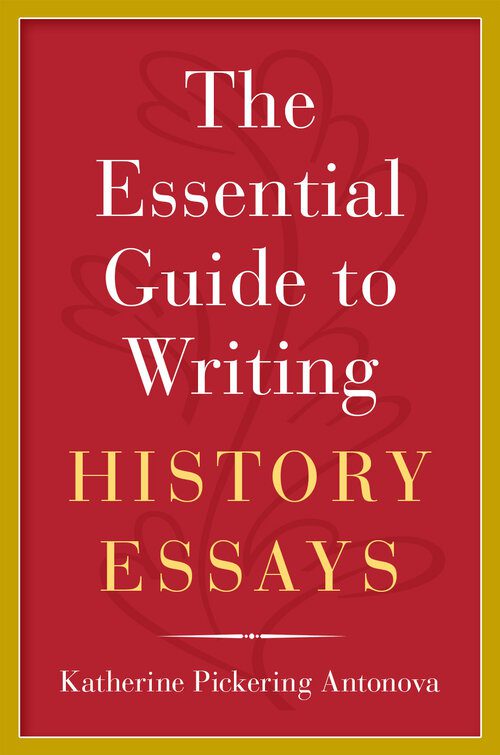
THE ESSENTIAL GUIDE TO WRITING HISTORY ESSAYS
by Katherine Pickering Antonova
The Essential Guide to Writing History Essays is a step-by-step guide to the typical assignments of any undergraduate or master’s-level history program in North America. Effective writing is a process of discovery, achieved through the continual act of making choices–what to include or exclude, how to order elements, and which style to choose–each according to the author’s goals and the intended audience. The book integrates reading and specialized vocabulary with writing and revision and addresses the evolving nature of digital media while teaching the terms and logic of traditional sources and the reasons for citation as well as the styles. This approach to writing not only helps students produce an effective final product and build from writing simple, short essays to completing a full research thesis, it also teaches students why and how an essay is effective, empowering them to approach new writing challenges with the freedom to find their own voice.
2019

AU COEUR DES MUTATIONS DU NÉGOCE EN MÉDITERRANÉE. LES ACTEURS ET LEURS CHOIX (SMYRNE, XVIIE-XXE SIÈCLE)
Edited by Elena Frangakis-Syrett, T. Allain and S. Lupo
Presses Universitaries de Provence, 2019
The articles in this volume analyze the evolution of trade and related sectors in the Mediterranean, from 17th to 20th centuries, privileging the city-port of Smyrna/Izmir and its hinterland in Ottoman Anatolia. Smyrna was the leading commercial center in the region at the time with global market contacts and a symbiotic, though dominant, economic relationship with its hinterland.
Different aspects of long-distance trade are examined including business strategies of firms that ranged from small-cap family firms to large-cap limited liability incorporated companies and the role of networks in establishing effective and trustworthy channels of communication amongst economic actors from different ethnicities and religions located in different markets within and beyond the Mediterranean.
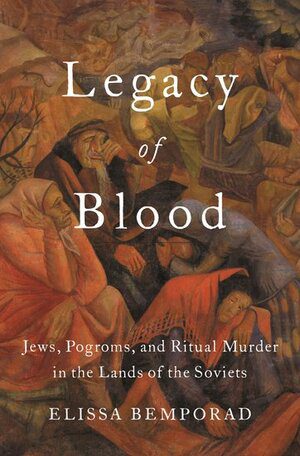
LEGACY OF BLOOD: JEWS, POGROMS, AND RITUAL MURDER IN THE LANDS OF THE SOVIETS
by Elissa Bemporad
This book traces the legacies of the two most extreme manifestations of tsarist antisemitism-pogroms and blood libels-in the Soviet Union, from 1917 to the early 1960s. Closely intertwined in history and memory, pogroms and blood libels were and are considered central to the Jewish experience in late Tsarist Russia, the only country on earth with large scale anti-Jewish violence in the early twentieth century. But their persistence and memory under the Bolsheviks-a chapter that is largely overlooked by the existing scholarship-significantly shaped the Soviet Jewish experience.
By exploring the phenomenon and the memory of pogroms and blood libels in the Soviet territories of the interwar period as well as, after World War II, in the newly annexed territories, Bemporad studies the social realities of everyday antisemitism through the emergence of communities of violence and memories of violence. The fifty-year-span from the Bolshevik Revolution to the early years of Krushchev included a living generation of Jews, and non-Jews alike, who remembered the Beilis Affair, the pogroms of the civil war and in some cases even the violence of the prerevolutionary years. Bemporad also examines the ways in which Jews reacted to and remembered the unprecedented violence of the pogroms of the Russian Civil War, and how they responded to and which strategies they adopted to confront accusations of ritual murder. By tracing the “afterlife” of pogroms and blood libels in the USSR, Legacy of Blood sheds light on the broader question of the changing position of Jews in Soviet society. And by doing so it tells the story of the solid yet ever changing and at times ambivalent relationship between the Soviet state and the Jewish minority group.
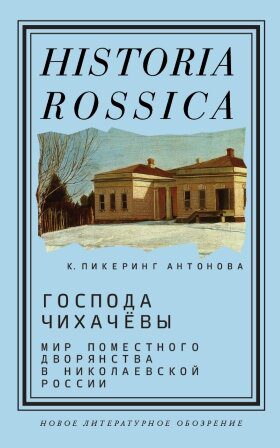
ГОСПОДА ЧИХАЧЕВЫ: МИР ПОМЕСТНОГО ДВОРЯНСТВА В НИКОЛАЕВСКОЙ РОССИИ
Russian translation of An Ordinary Marriage: The World of a Gentry Family in Provincial Russia by Katherine Pickering Antonova

NEW YORK RECENTERED: BUILDING THE METROPOLIS FROM THE SHORE
by Kara Murphy Schlichting
University of Chicago Press, 2019
The history of New York City’s urban development often centers on titanic municipal figures like Robert Moses and on prominent inner Manhattan sites like Central Park. New York Recentered boldly shifts the focus to the city’s geographic edges—the coastlines and waterways—and to the small-time unelected locals who quietly shaped the modern city. Kara Murphy Schlichting details how the vernacular planning done by small businessmen and real estate operators, performed independently of large scale governmental efforts, refigured marginal locales like Flushing Meadows and the shores of Long Island Sound and the East River in the late nineteenth and early twentieth centuries. The result is a synthesis of planning history, environmental history, and urban history that recasts the story of New York as we know it.

CONNECTING HISTORIES: JEWS AND THEIR OTHERS IN EARLY MODERN EUROPE
Edited by Francesca Bregoli and David B. Ruderman
University of Pennsylvania Press, 2019
Whether forced by governmental decree, driven by persecution and economic distress, or seeking financial opportunity, the Jews of early modern Europe were extraordinarily mobile, experiencing both displacement and integration into new cultural, legal, and political settings. This, in turn, led to unprecedented modes of social mixing for Jews, especially for those living in urban areas, who frequently encountered Jews from different ethnic backgrounds and cultural orientations. Additionally, Jews formed social, economic, and intellectual bonds with mixed populations of Christians. While not necessarily effacing Jewish loyalties to local places, authorities, and customs, these connections and exposures to novel cultural settings created new allegiances as well as new challenges, resulting in constructive relations in some cases and provoking strife and controversy in others.
The essays collected by Francesca Bregoli and David B. Ruderman in Connecting Histories show that while it is not possible to speak of a single, cohesive transregional Jewish culture in the early modern period, Jews experienced pockets of supra-local connections between West and East—for example, between Italy and Poland, Poland and the Holy Land, and western and eastern Ashkenaz—as well as increased exchanges between high and low culture. Special attention is devoted to the impact of the printing press and the strategies of representation and self-representation through which Jews forged connections in a world where their status as a tolerated minority was ambiguous and in constant need of renegotiation.
Exploring the ways in which early modern Jews related to Jews from different backgrounds and to the non-Jews around them, Connecting Histories emphasizes not only the challenging nature and impact of these encounters but also the ambivalence experienced by Jews as they met their others.
2018
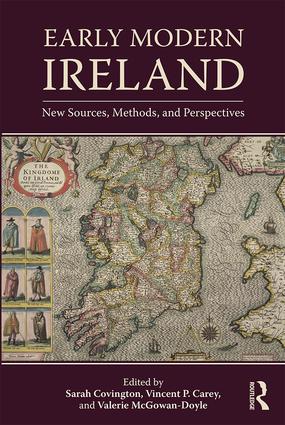
EARLY MODERN IRELAND: NEW SOURCES, METHODS, AND PERSPECTIVES
Edited by Sarah Covington, Valerie McGowan-Doyle, Vincent Carey
Early Modern Ireland: New Sources, Methods, and Perspectives offers fresh approaches and case studies that push the field of early modern Ireland, and of British and European history more generally, into unexplored directions.
The centuries between 1500 and 1700 were pivotal in Ireland’s history, yet so much about this period has remained neglected until relatively recently, and a great deal has yet to be explored. Containing seventeen original and individually commissioned essays by an international and interdisciplinary group of leading and emerging scholars, this book covers a wide range of topics, including social, cultural, and political history as well as folklore, medicine, archaeology, and digital humanities, all of which are enhanced by a selection of maps, graphs, tables, and images.
Urging a reevaluation of the terms and assumptions which have been used to describe Ireland’s past, and a consideration of the new directions in which the study of early modern Ireland could be taken, Early Modern Ireland: New Sources, Methods, and Perspectives is a groundbreaking collection for students and scholars studying early modern Irish history.
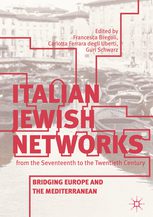
ITALIAN JEWISH NETWORKS FROM THE SEVENTEENTH TO THE TWENTIETH CENTURY: BRIDGING EUROPE AND THE MEDITERRANEAN
Edited by Francesca Bregoli, Carlotta Ferrara degli Uberti, and Guri Schwarz
The volume investigates the interconnections between the Italian Jewish worlds and wider European and Mediterranean circles, situating the Italian Jewish experience within a transregional and transnational context mindful of the complex set of networks, relations, and loyalties that characterized Jewish diasporic life. Preceded by a methodological introduction by the editors, the chapters address rabbinic connections and ties of communal solidarity in the early modern period, and examine the circulation of Hebrew books and the overlap of national and transnational identities after emancipation. For the twentieth century, this volume additionally explores the Italian side of the Wissenschaft des Judentums; the role of international Jewish agencies in the years of Fascist racial persecution; the interactions between Italian Jewry, JDPs and Zionist envoys after Word War II; and the impact of Zionism in transforming modern Jewish identities.
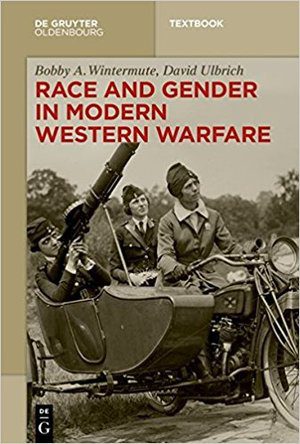
RACE AND GENDER IN MODERN WESTERN WARFARE
by Bobby A. Wintermute and David Ulbrich
De Gruyter Oldenbourg, 2018
This book fills a gap in the historiographical and theoretical fields of race, gender, and war. In brief, Race and Gender in Modern Western Warfare (RGMWW) offers an introduction into how cultural constructions of identity are transformed by war and how they in turn influence the nature of military institutions and conflicts. Focusing on the modern West, this project begins by introducing the contours of race and gender theories as they have evolved and how they are employed by historians, anthropologists, sociologists, and other scholars. The project then mixes chronological narrative with analysis and historiography as it takes the reader through a series of case studies, ranging from the early nineteenth century to the Global War of Terror. The purpose throughout is not merely to create a list of so-called “great moments” in race and gender, but to create a meta-landscape in which readers can learn to identify for themselves the disjunctures, flaws, and critical synergies in the traditional memory and history of a largely monochrome and male-exclusive military experience. The final chapter considers the current challenges that Western societies, particularly the United States, face in imposing social diversity and tolerance on statist military structures in a climates of sometimes vitriolic public debate. RGMWW represents our effort to blend race, gender, and military war, to problematize these intersections, and then provide some answers to those problems.

A SOCIAL HISTORY OF EARLY ROCK ‘N’ ROLL IN GERMANY: HAMBURG FROM BURLESQUE TO THE BEATLES, 1956-69
by Julia Sneeringer
A Social History of Early Rock ‘n’ Roll in Germany explores the people and spaces of St. Pauli’s rock’n’roll scene in the 1960s. Starting in 1960, young British rockers were hired to entertain tourists in Hamburg’s red-light district around the Reeperbahn in the area of St. Pauli. German youths quickly joined in to experience the forbidden thrill of rock’n’roll, and used African American sounds to distance themselves from the old Nazi generation. In 1962 the Star Club opened and drew international attention for hosting some of the Beatles’ most influential performances. In this book, Julia Sneeringer weaves together this story of youth culture with histories of sex and gender, popular culture, media, and subculture.
By exploring the history of one locale in depth, Sneeringer offers a welcome contribution to the scholarly literature on space, place, sound and the city, and pays overdue attention to the impact that Hamburg had upon music and style. She is also careful to place performers such as The Beatles back into the social, spatial, and musical contexts that shaped them and their generation.
This book reveals that transnational encounters between musicians, fans, entrepreneurs and businessmen in St. Pauli produced a musical style that provided emotional and physical liberation and challenged powerful forces of conservatism and conformity with effects that transformed the world for decades to come.
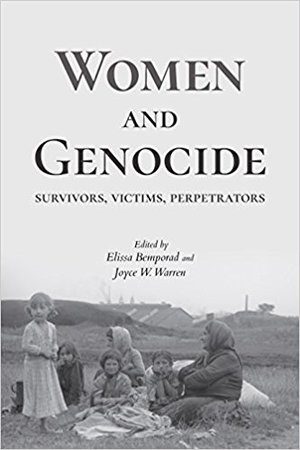
WOMEN AND GENOCIDE: SURVIVORS, VICTIMS, PERPETRATORS
Edited by Elissa Bemporad and Joyce W. Warren
Indiana University Press, 2018
The genocides of modern history–Rwanda, Armenia, Guatemala, the Holocaust, and countless others–and their effects have been well documented, but how do the experiences of female victims and perpetrators differ from those of men? In Women and Genocide, human rights advocates and scholars come together to argue that the memory of trauma is gendered and that women’s voices and perspectives are key to our understanding of the dynamics that emerge in the context of genocidal violence. The contributors of this volume examine how women consistently are targets for the sexualized violence that serves as an instrument of ethnic cleansing, how female perpetrators take advantage of the new power structures, and how women are involved in the struggle for justice in post-genocidal contexts. By placing women at center stage, Women and Genocide helps us to better understand the nexus existing between misogyny and violence in societies where genocide erupts.
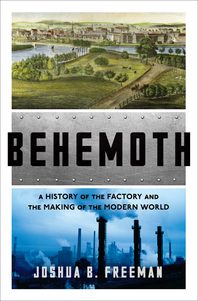
2017
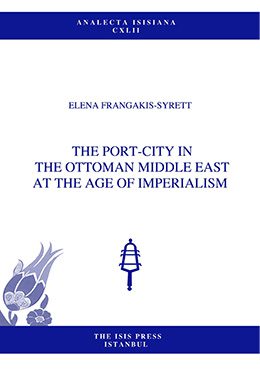
THE PORT-CITY IN THE OTTOMAN MIDDLE EAST AT THE AGE OF IMPERIALISM
by Elena Frangakis-Syrett
Much has been written about the integration of the world economy and how formative it was for the economy of the Ottoman Empire from the 18th through to the early 20th centuries, a period this volume covers; yet how this process occurred, and what was the role of the Ottoman economy within it, has not been adequately explained. Thus the book seeks to construct a theoretical framework of integration as it occurred, the role of all participants in the process –Ottoman and Western– and how it affected city-ports in the Ottoman Mediterranean, including the role of commercial networks.
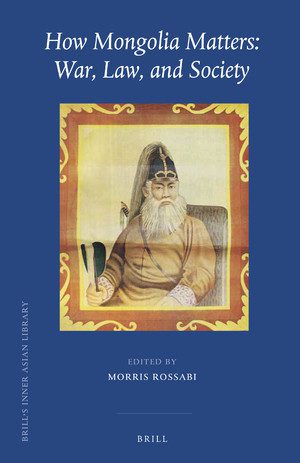
HOW MONGOLIA MATTERS: WAR, LAW, AND SOCIETY
Edited by Morris Rossabi
The essays in this volume dispel some of the myths concerning the Mongolians and other Inner Asian peoples. This remarkable volume edited by and dedicated to Morris Rossabi challenges the depictions of these mostly nomadic pastoral groups as barbaric plunderers and killers while not denying the destruction and loss of life they engendered. Several essays pioneer in consulting Mongolian and other Inner Asian rather than exclusively Chinese and Persian sources, offering new and different perspectives. Such research reveals the divisions among the Mongolians, which weakened them and led to the collapse of their Empire.
Two essays dispel myths about modern Mongolia and reveal the country’s significance, even in an era of superpowers, two of which surround it.
Contributors are: Christopher Atwood, Bettine Birge, Michael Brose, Pamela Crossley, Johan Elverskog, Jargalsaikhan Enkhsaikhan, Yuki Konagaya, James Millward, David Morgan, and David Robinson.
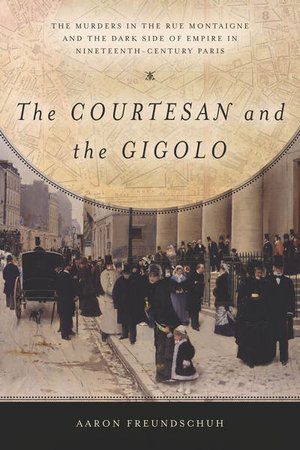

MEDICAL BONDAGE: RACE, GENDER, AND THE ORIGINS OF AMERICAN GYNECOLOGY
by Deirdre Cooper Owens (now at the University of Connecticut)
University of Georgia Press, 2017
Winner of the Darlene Clark Award from the Organization of American Historians, for best book in African-American women’s and gender history, 2017
The accomplishments of pioneering doctors such as John Peter Mettauer, James Marion Sims, and Nathan Bozeman are well documented. It is also no secret that these nineteenth-century gynecologists performed experimental caesarean sections, ovariotomies, and obstetric stulae repairs primarily on poor and powerless women. Medical Bondage breaks new ground by exploring how and why physicians denied these women their full humanity yet valued them as “medical superbodies” highly suited for medical experimentation.
In Medical Bondage, Cooper Owens examines a wide range of scientific literature and less formal communications in which gynecologists created and disseminated medical fictions about their patients, such as their belief that black enslaved women could withstand pain better than white “ladies.” Even as they were advancing medicine, these doctors were legitimizing, for decades to come, groundless theories related to whiteness and blackness, men and women, and the inferiority of other races or nationalities. Medical Bondage moves between southern plantations and northern urban centers to reveal how nineteenth-century American ideas about race, health, and status influenced doctor-patient relationships in sites of healing like slave cabins, medical colleges, and hospitals. It also retells the story of black enslaved women and of Irish immigrant women from the perspective of these exploited groups and thus restores for us a picture of their lives.
2016
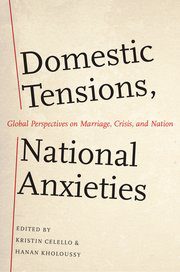
DOMESTIC TENSIONS, NATIONAL ANXIETIES: GLOBAL PERSPECTIVES ON MARRIAGE, CRISIS, AND NATION
Edited by Kristin Celello and Hanan Kholoussy
First collection of its kind to feature interdisciplinary and global perspectives on marriage, crisis, and the nation
Includes work by noted senior scholars as well as up-and-coming junior ones, who have spent time in archives and doing fieldwork around the world.
Essays cover the United States, Burma, India, Brazil, Russia, Zanzibar, France, China, Nigeria, Iran, Japan, and Egypt.
Addresses how states and public policies address issues of marriage, as well as how marriage crises shape interactions between ordinary men and women and the governments under which they live.
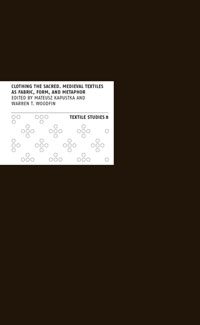
CLOTHING THE SACRED: MEDIEVAL TEXTILES AS FABRIC, FORM, AND METAPHOR
Edited by Warren T. Woodfin and Mateusz Kapustka
Dietrich Reimer Verlag GmbH, 2016
At their most basic level, liturgical vestments and textiles serve to differentiate the sacred and the profane, the clergy and the laity. Not only are they sacred objects in their own right, being consecrated to a holy use, but they point beyond themselves to historical parallels – to events in the life of Christ or to the furnishings of the Jerusalem Temple – or to anagogical symbolism of the heavenly graces.
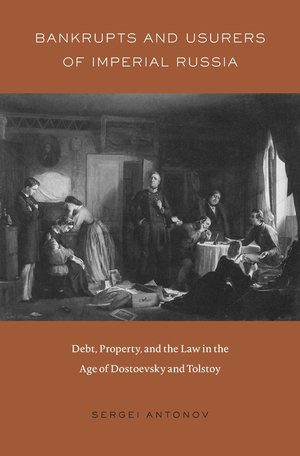
BANKRUPTS AND USURERS OF IMPERIAL RUSSIA: DEBT, PROPERTY, AND THE LAW IN THE AGE OF DOSTOEVSKY AND TOLSTOY
by Sergei Antonov (now at Yale University)
Harvard University Press, 2016
Harvard Historical Studies 187
Winner of the Ed A Hewett Book Prize for outstanding publication on the political economy of Russia, Eurasia and/or Eastern Europe
As readers of classic Russian literature know, the nineteenth century was a time of pervasive financial anxiety. With incomes erratic and banks inadequate, Russians of all social castes were deeply enmeshed in networks of credit and debt. The necessity of borrowing and lending shaped perceptions of material and moral worth, as well as notions of social respectability and personal responsibility. Credit and debt were defining features of imperial Russia’s culture of property ownership. Sergei Antonov recreates this vanished world of borrowers, bankrupts, lenders, and loan sharks in imperial Russia from the reign of Nicholas I to the period of great social and political reforms of the 1860s.
Poring over a trove of previously unexamined records, Antonov gleans insights into the experiences of ordinary Russians, rich and poor, and shows how Russia’s informal but sprawling credit system helped cement connections among property owners across socioeconomic lines. Individuals of varying rank and wealth commonly borrowed from one another. Without a firm legal basis for formalizing debt relationships, obtaining a loan often hinged on subjective perceptions of trustworthiness and reputation. Even after joint-stock banks appeared in Russia in the 1860s, credit continued to operate through vast networks linked by word of mouth, as well as ties of kinship and community. Disputes over debt were common, and Bankrupts and Usurers of Imperial Russia offers close readings of legal cases to argue that Russian courts—usually thought to be underdeveloped in this era—provided an effective forum for defining and protecting private property interests.

UMĚNÍ A ŽIVOT V MODERNISTICKÉ PRAZE: KAREL ČAPEK A JEHO GENERACE
by Thomas Ort
Czech Translation of Art and Life in Modernist Prague: Karel Capek and His Generation, 1911-1938
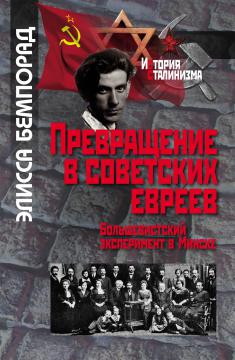
ПРЕВРАЩЕНИЕ В СОВЕТСКИХ ЕВРЕЕВ: БОЛЬШЕВИСТСКИЙ ЕКСПЕРИМЕНТ В МИНСКЕ
by Elissa Bemporad
Russian Translation of Becoming Soviet Jews: The Bolshevik Experiment in Minsk

A CONSUMER’S GUIDE TO INFORMATION: HOW TO AVOID LOSING YOUR MIND ON THE INTERNET
by Katherine Pickering Antonova
A Consumer’s Guide to Information teaches the reader how to apply basic critical thinking skills to making sense of the information avalanche brought to us by digital media. It is a guide to staying sane, not getting conned, and understanding more.
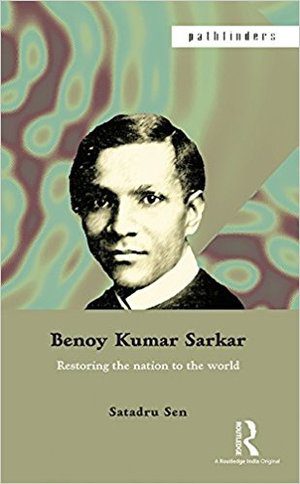
BENOY KUMAR SARKAR: RESTORING THE NATION TO THE WORLD
by Satadru Sen
This book explores the life and times of the pioneering Indian sociologist Benoy Kumar Sarkar. It locates him simultaneously in the intellectual history of India and the political history of the world in the twentieth century. It focuses on the development and implications of Sarkar’s thinking on race, gender, governance and nationhood in a changing context.
A penetrating portrait of Sarkar and his age, this book will be of great interest to scholars and researchers of modern Indian history, sociology, and politics.
2015
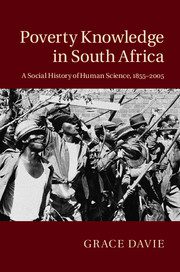
POVERTY KNOWLEDGE IN SOUTH AFRICA: A SOCIAL HISTORY OF HUMAN SCIENCE, 1855-2000
by Grace Davie
Cambridge University Press, 2015
Poverty is South Africa’s greatest challenge. But what is “poverty”? And how can it be measured and addressed? In South Africa, human-science knowledge about the cost of living grew out of colonialism, industrialization, apartheid, and civil resistance campaigns, which makes this knowledge far from neutral or apolitical. South Africans have used the Poverty Datum Line (PDL), and other poverty indicators, to petition the state, to chip away at the pillars of white supremacy, and, more recently, to criticize the postapartheid government’s failures to deliver on its promises. Rather than advocating one particular policy solution, this book argues that poverty knowledge – including knowledge of the tension between quantitative and qualitative observations – teaches us about the dynamics of historical change, the power of racial thinking in white settler societies, and the role of ordinary people in shaping state policy. Readers will gain new perspectives on today’s debates about social welfare, redistribution, and human rights and will ultimately find reasons to rethink conventional approaches to advocacy.
The first book to locate technical poverty lines in their broad historical context in South Africa
Traces the origins of present-day debates about social welfare grants and income inequality
Draws on deep archival research, interviews, and a wide range of source materials ranging from novels to unpublished field notes to letters, parliamentary debates, and newspaper reports
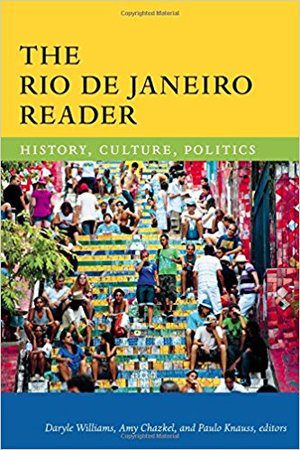
THE RIO DE JANEIRO READER: HISTORY, CULTURE, POLITICS
Edited by Amy Chazkel (now at Columbia University), Daryle Williams, and Paulo Knauss
Spanning a period of over 450 years, The Rio de Janeiro Reader traces the history, culture, and politics of Rio de Janeiro, Brazil, through the voices, images, and experiences of those who have made the city’s history. It outlines Rio’s transformation from a hardscrabble colonial outpost and strategic port into an economic, cultural, and entertainment capital of the modern world. The volume contains a wealth of primary sources, many of which appear here in English for the first time. A mix of government documents, lyrics, journalism, speeches, ephemera, poems, maps, engravings, photographs, and other sources capture everything from the fantastical impressions of the first European arrivals to the complaints about roving capoeira gangs, and from sobering eyewitness accounts of slavery’s brutality to the glitz of Copacabana. The definitive English-language resource on the city, The Rio de Janeiro Readerpresents the “Marvelous City” in all its complexity, importance, and intrigue.
2014
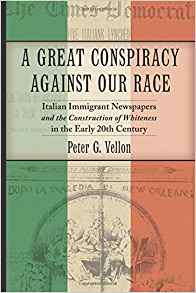
A GREAT CONSPIRACY AGAINST OUR RACE: ITALIAN IMMIGRANT NEWSPAPERS AND THE CONSTRUCTIONS OF WHITENESS IN THE EARLY 20TH CENTURY
by Peter G. Vellon
Racial history has always been the thorn in America’s side, with a swath of injustices—slavery, lynching, segregation, and many other ills—perpetrated against black people. This very history is complicated by, and also dependent on, what constitutes a white person in this country. Many of the European immigrant groups now considered white have also had to struggle with their own racial consciousness. This book explores how Italian immigrants, a once undesirable and “swarthy” race, assimilated into dominant white culture through the influential national and radical Italian language press in New York City. Examining the press as a cultural production of the Italian immigrant community, this book investigates how this immigrant press constructed race, class, and identity from 1886 through 1920. Their frequent coverage of racially charged events of the time, as well as other topics such as capitalism and religion, reveals how these papers constructed a racial identity as Italian, American, and white. The book illustrates how the immigrant press was a site where socially constructed categories of race, color, civilization, and identity were reworked, created, contested, and negotiated. It also uncovers how Italian immigrants filtered societal pressures and redefined the parameters of whiteness, constructing their own identity.
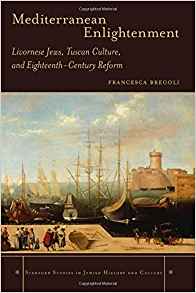
MEDITERRANEAN ENLIGHTENMENT: LIVORNESE JEWS, TUSCAN CULTURE, AND EIGHTEENTH-CENTURY REFORM
by Francesca Bregoli
Stanford University Press, 2014
Finalist in the 2014 National Jewish Book Awards (both Sephardic Culture Category and Writing Based on Archival Material Category), sponsored by the Jewish Book Council.
The Mediterranean port of Livorno was home to one of the most prominent and privileged Jewish enclaves of early modern Europe. Focusing on Livornese Jewry, this book offers an alternative perspective on Jewish acculturation during the eighteenth century, and reassesses common assumptions about the interactions of Jews with outside culture and the impact of state reforms on the corporate Jewish community. Working from a vast array of previously untapped archival and literary sources, Francesca Bregoli combines cultural analysis with a study of institutional developments to investigate Jewish responses to Enlightenment thought and politics, as well as non-Jewish perceptions of Jews, through an exploration of Jewish-Christian cultural exchange, sites of sociability, and reformist policies. Mediterranean Enlightenment shows that Livornese Jewish scholars engaged with Enlightenment ideals and aspired to contribute to society at large without weakening the boundaries of traditional Jewish life. By arguing that the privileged status of Livorno Jewry had conservative rather than liberalizing effects, it also challenges the notion that economic utility facilitates Jewish integration, nuancing received wisdom about processes of emancipation in Europe.
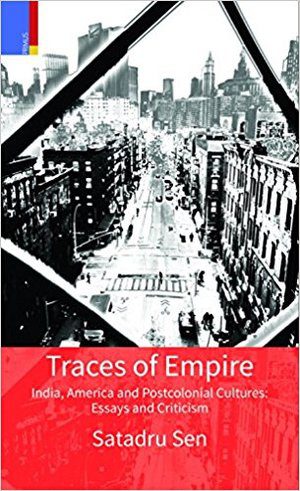
TRACES OF EMPIRE: INDIA, AMERICA, AND POSTCOLONIAL CULTURES
by Satadru Sen
The essays in this volume examine some of those strands, primarily in the contexts of India and the United States, but also in other parts of the world, such as Germany and Israel-Palestine. They highlight not only the particular histories of cultures of power and desire, but also the convergences of forms of power and desire originating in different historical settings.
2013
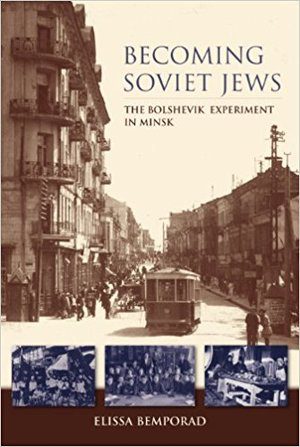
BECOMING SOVIET JEWS: THE BOLSHEVIK EXPERIMENT IN MINSK
by Elissa Bemporad
Indiana University Press, 2013
Winner, 2012 Fraenkel Prize in Contemporary History
Winner, 2013 National Jewish Book Awards
Minsk, the present capital of Belarus, was a heavily Jewish city in the decades between the world wars. Recasting our understanding of Soviet Jewish history, Becoming Soviet Jews demonstrates that the often violent social changes enforced by the communist project did not destroy continuities with prerevolutionary forms of Jewish life in Minsk. Using Minsk as a case study of the Sovietization of Jews in the former Pale of Settlement, Elissa Bemporad reveals the ways in which many Jews acculturated to Soviet society in the 1920s and 1930s while remaining committed to older patterns of Jewish identity, such as Yiddish culture and education, attachment to the traditions of the Jewish workers’ Bund, circumcision, and kosher slaughter. This pioneering study also illuminates the reshaping of gender relations on the Jewish street and explores Jewish everyday life and identity during the years of the Great Terror.
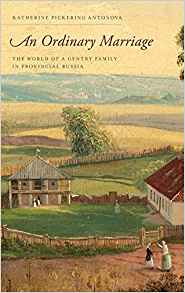
AN ORDINARY MARRIAGE: THE WORLD OF A GENTRY FAMILY IN PROVINCIAL RUSSIA
by Katherine Pickering Antonova
Unprecedentedly rich sources on the private lives of middling gentry
Based in part on multiple diaries by an obscure woman; no source like this has previously been available
Combines husband and wife diaries, uniquely offering dual perspectives on a marriage
Offers new insights on serfdom, marriage and gender, the “middling” classes, early Russian nationalisms, readership, and the reception of ideas
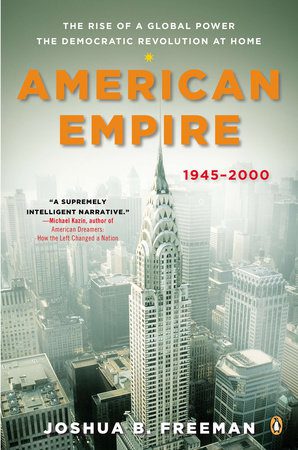
AMERICAN EMPIRE: THE RISE OF GLOBAL POWER, THE DEMOCRATIC REVOLUTION AT HOME, 1945-2000
by Joshua B. Freeman
A landmark history of postwar America and the second volume in the Penguin History of the United States series, edited by Eric Foner
In this momentous work, acclaimed labor historian Joshua B. Freeman presents an epic portrait of the United States in the latter half of the twentieth century, revealing a nation galvanized by change even as conflict seethed within its borders. Beginning in 1945, he charts the astounding rise of the labor movement and its pitched struggle with the bastions of American capitalism in the 1940s and ’50s, untangling the complicated threads between the workers’ agenda and that of the civil rights and women’s movements. Through the lens of civil rights, the Cold War struggle, and the labor movement, American Empire teaches us something profound about our past while illuminating the issues that continue to animate American political discourse today.
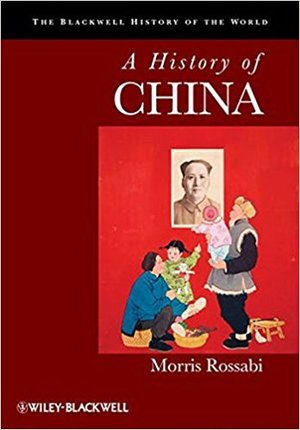
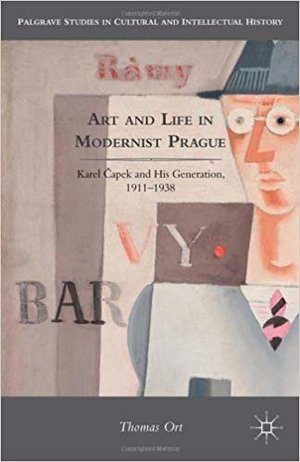
ART AND LIFE IN MODERNIST PRAGUE: KAREL CAPEK AND HIS GENERATION, 1911-1938
by Thomas Ort
In most histories of Europe before the First World War, modern life in Habsburg Mitteleuropa takes on a decidedly gloomy cast. Centering on Vienna in the twilight years of the Austro-Hungarian Empire, such accounts describe the failure of rationalism and the rise of a dangerous politics of fantasy. This book tells a different story, highlighting a generation of Czech writers and artists distinguished by their affirmative encounter with the modern world in the first decades of the twentieth century. Novelist and playwright Karel Čapek, along with other members of his cohort, embraced the possibilities of the post-Habsburg era. Tracing the roots of Čapek’s generation to cubist art and turn-of-the-century philosophy, Thomas Ort shows that the form of modernism they championed led not into the thickets of fascism or communism but in fact closer to liberal political ideals.
2012
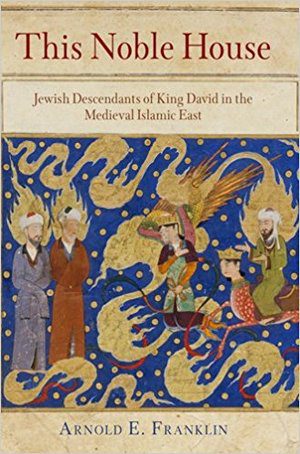

DIFFERENCE AND DISABILITY IN THE MEDIEVAL ISLAMIC WORLD: BLIGHTED BODIES
by Kristina Richardson
Edinburgh University Press, 2012
Outlines the complex significance of bodies in the late medieval central Arab Islamic lands
Did you know that blue eyes, baldness, bad breath and boils were all considered bodily ‘blights’ by Medieval Arabs, as were cross eyes, lameness and deafness? What assumptions about bodies influenced this particular vision of physical difference? How did blighted people view their own bodies? Through close analyses of anecdotes, personal letters, (auto)biographies, erotic poetry, non-binding legal opinions, diaristic chronicles and theological tracts, the cultural views and experiences of disability and difference in the medieval Islamic world are brought to life.
Key Features
Investigates the place of physically different, disabled and ill individuals in medieval Islam
Organised around the lives and works of 6 Muslim men, each highlighting a different aspect of bodily difference
Addresses broad cultural questions relating to social class, religious orthodoxy, moral reputation, drug use, male homoeroticism and self-representation in the public sphere
Moves towards a coherent theory of medieval disability and bodily aesthetics in Islamic cultural traditions
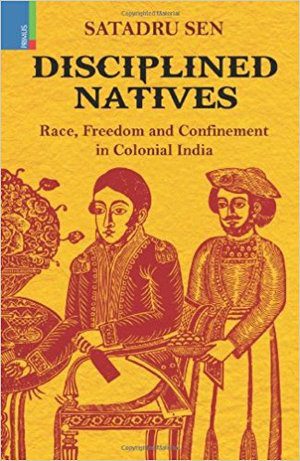
DISCIPLINED NATIVES: RACE, FREEDOM AND CONFINEMENT IN COLONIAL INDIA
by Satadru Sen
This volume examines three interrelated aspects of the history of British India: race, the disciplining institution, and attempts by the colonized to imagine states of freedom. They deal with sites as diverse as the prison, the family, the classroom, the playing field and children’s literature.
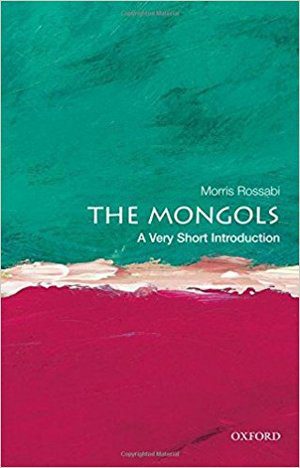
THE MONGOLS: A VERY SHORT INTRODUCTION
by Morris Rossabi
Covers the entire Mongol empire and not simply Yuan China or the Golden Horde in Russia
Emphasizes the artistic, cultural, technological, and scientific contributions of the Mongols
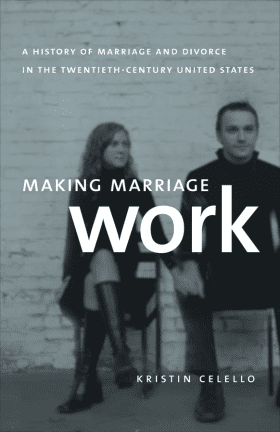
MAKING MARRIAGE WORK: A HISTORY OF MARRIAGE AND DIVORCE IN THE TWENTIETH-CENTURY UNITED STATES
by Kristin Celello
University of North Carolina Press, 2012
By the end of World War I, the skyrocketing divorce rate in the United States had generated a deep-seated anxiety about marriage. This fear drove middle-class couples to seek advice, both professional and popular, in order to strengthen their relationships. In Making Marriage Work, historian Kristin Celello offers an insightful and wide-ranging account of marriage and divorce in America in the twentieth century, focusing on the development of the idea of marriage as “work.” Throughout, Celello illuminates the interaction of marriage and divorce over the century and reveals how the idea that marriage requires work became part of Americans’ collective consciousness.
2011

PUBLIC HEALTH AND THE U.S. MILITARY: A HISTORY OF THE ARMY MEDICAL DEPARTMENT, 1818-1917
by Bobby A. Wintermute
Public Health and the US Military is a cultural history of the US Army Medical Department focusing on its accomplishments and organization coincident with the creation of modern public health in the Progressive Era. A period of tremendous social change, this time bore witness to the creation of an ideology of public health that influences public policy even today. The US Army Medical Department exerted tremendous influence on the methods adopted by the nation’s leading civilian public health figures and agencies at the turn of the twentieth century.
Public Health and the US Military also examines the challenges faced by military physicians struggling to win recognition and legitimacy as expert peers by other Army officers and within the civilian sphere. Following the experience of typhoid fever outbreaks in the volunteer camps during the Spanish-American War, and the success of uniformed researchers and sanitarians in confronting yellow fever and hookworm disease in Cuba and Puerto Rico, the Medical Department’s influence and reputation grew in the decades before the First World War. Under the direction of sanitary-minded medical officers, the Army Medical Department instituted critical public health reforms at home and abroad, and developed a model of sanitary tactics for wartime mobilization that would face its most critical test in 1917.
The first large conceptual overview of the role of the US Army Medical Department in American society during the nineteenth and early twentieth centuries, this book details the culture and quest for legitimacy of an institution dedicated to promoting public health and scientific medicine.

HOSTAGES AND HOSTAGE-TAKING IN THE ROMAN EMPIRE
by Joel Allen
Cambridge University Press, 2011
Hundreds of foreign hostages were detained among the Romans as the empire grew in the Republic and early Principate. As prominent figures at the center of diplomacy and as exotic representatives, or symbols, of the outside world, they drew considerable attention in Roman literature and other artistic media. Our sources discuss hostages in terms of the geopolitics that motivated their detention, as well as in accordance with other structures of power. Hostages, thus, could be located in a social hierarchy, in a family network, in a cultural continuum, or in a sexual role. In these schemes, an individual Roman, or Rome in general, becomes not just a conqueror, but also a patron, father, teacher, or generically masculine. By focusing on the characterizations of hostages in Roman culture, we witness Roman attitudes toward ethnicity and imperial power.
2010
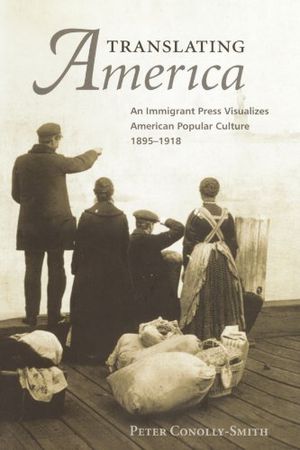
TRANSLATING AMERICA: AN ETHNIC PRESS AND POPULAR CULTURE, 1890-1920
by Peter Conolly-Smith
At the turn of the century, New York City’s Germans constituted a culturally and politically dynamic community, with a population 600,000 strong. Yet fifty years later, traces of its culture had all but disappeared. What happened? The conventional interpretation has been that, in the face of persecution and repression during World War I, German immigrants quickly gave up their own culture and assimilated into American mainstream life.
But in Translating America, Peter Conolly-Smith offers a radically different analysis. He argues that German immigrants became German-Americans not out of fear, but instead through their participation in the emerging forms of pop culture. Drawing from German and English newspapers, editorials, comic strips, silent movies, and popular plays, he reveals that German culture did not disappear overnight, but instead merged with new forms of American popular culture before the outbreak of the war. Vaudeville theaters, D.W. Griffith movies, John Philip Sousa tunes, and even baseball games all contributed to German immigrants’ willing transformation into Americans.
Translating America tackles one of the thorniest questions in American history: How do immigrants assimilate into, and transform, American culture?
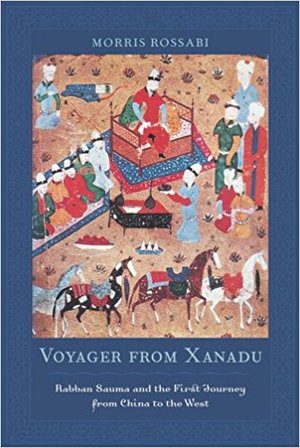
VOYAGER FROM XANADU: RABBAN SAUMA AND THE FIRST JOURNEY FROM CHINA TO THE WEST
by Morris Rossabi
University of California Press, 2010
Toward the end of the thirteenth century, at about the time Marco Polo was being received by the great Khubilai Khan, a Nestorian Christian monk from China called Rabban Sauma was making the reverse journey from the Mongol capital (what is now Beijing) to Jerusalem. Upon reaching Baghdad—the first traveler to arrive from China—Sauma learned that his pilgrimage could not be fulfilled because of Islamic control of the Holy Land. In Voyager from Xanadu,Morris Rossabi traces Sauma’s trans-Eurasian travels against the turbulent era of the Mongol Empire and the last Crusades. His indispensable book provides a unique first-hand Asian perspective on Europe and illuminates a crucial period in the early history of global, diplomatic, and commercial networking.
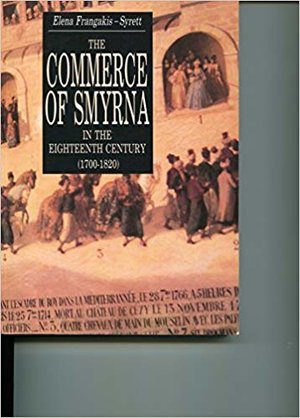
ΤΟ ΕΜΠΌΡΙΟ ΤΗΣ ΣΜΎΡΝΗΣ ΤΟΝ 18O ΑΙΏΝΑ (1700-1820)
Athens: Alexandria Publications, 2010
Greek edition of The Commerce of Smyrna (1992).
It looks at the organization and functioning of the marketplace of the city of Smyrna/Izmir and analyzes how Muslims and non-Muslims –Arabs, Armenians, Greeks, Jews and Turks— and Europeans, interacted with each other, including establishing commercial partnerships with each other, irrespective of ethnicity, religion or language, in the early modern period, 1700-1820. An important hub commanding the trading routes between the Middle East and Western Europe, Smyrna nurtured a highly competitive and innovative business environment for its time. This led to the emergence of a highly cosmopolitan society for which the port-city of Smyrna/Izmir was so renowned for and was a major reason for the economic success and growth of the city.
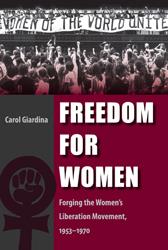
FREEDOM FOR WOMEN: FORGING THE WOMEN’S LIBERATION MOVEMENT. 1953-1970
by Carol Giardina
University Press of Florida, 2010
“Giardina presents a history of the women’s liberation movement that captures the early excitement of collective feminist activity. Grounded in rich details, Giardina’s study uncovers how a small group of people generated the ideas and strategies that helped a movement catch fire.”–Anne M. Valk, author of Radical Sisters
“A fresh and provocative interpretation of the origins of the women’s liberation movement. By examining the contributions of African American and white feminist ‘founders, ‘ her work challenges widely held misconceptions about second wave feminism.”–Christina Greene, University of Wisconsin
In this richly detailed firsthand history of the contemporary Women’s Liberation Movement (WLM), scholar-activist Carol Giardina argues against the prevalent belief that the movement grew out of frustrations over the male chauvinism experienced by WLM founders active in the Black Freedom Movement and the New Left. Instead, she contends, it was the ideas, resources, and skills that women gained in these movements that were the new and necessary catalysts for forging the WLM in the 1960s.
Giardina uses a focused study of the WLM in Florida to tap into the common theory and history shared by a relatively small band of Women’s Liberation founders across the country. Drawing on a wealth of interviews, autobiographical essays, organizational records, and published writings, Freedom for Women brings to light information that has been previously ignored in other secondary accounts about the leadership of African American women in the movement. It also explores activists’ roots in other movements on the left. Comprehensive, serendipitous, and carefully formulated, Giardina’s work is a vivid portrait of the people and events that shaped radical feminism.
Carol Giardina is one of the founders of the modern Women’s Liberation Movement.
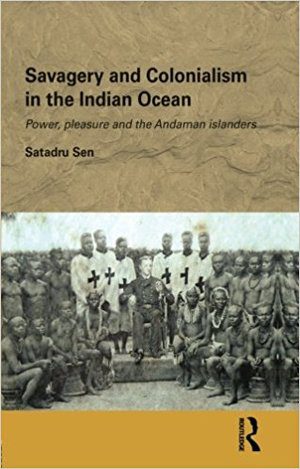
SAVAGERY AND COLONIALISM IN THE INDIAN OCEAN: POWER, PLEASURE AND THE ANDAMAN ISLANDERS
This book examines the social, political and ideological dimensions of the encounter between the indigenous inhabitants of the Andaman islands, British colonizers and Indian settlers in the eighteenth and nineteenth centuries. The British-Indian penal settlements in the Andaman Islands – beginning tentatively in 1789 and renewed on a larger scale in 1858 – represent an extensive, complex experiment in the management of populations through colonial discourses of race, criminality, civilization, and savagery. Focussing on the ubiquitous characterization of the Andaman islanders as ‘savages’, this study explores the particular relationship between savagery and the practice of colonialism.
Satadru Sen examines savagery and the savage as dynamic components of colonialism in South Asia: not intellectual abstractions with clear and fixed meanings, but politically ‘alive’ and fiercely contested products of the colony. Illuminating and historicizing the processes by which the discourse of savagery goes through multiple and fundamental shifts between the late eighteenth and late nineteenth centuries, he shows the links and breaks between these shifts and changing ideas of race, adulthood and masculinity in the Andamans, British India, Britain and in the wider empire. He also highlights the implications of these changes for the ‘savages’ themselves. At the broadest level, this book re-examines the relationship between the modern and the primitive in a colonial world.

